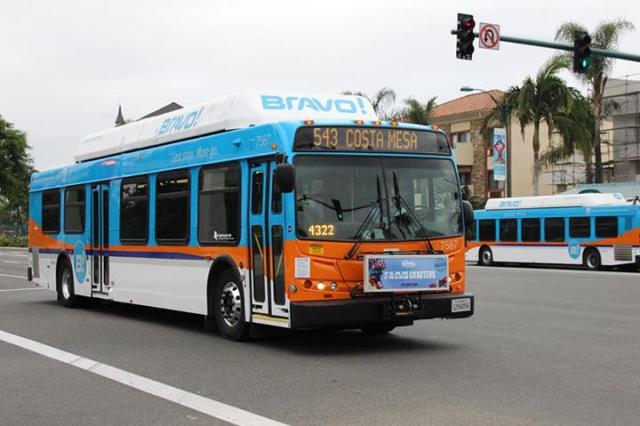The Orange County Transportation Authority Board of Directors approved a balanced budget of more than $1.3 billion for the upcoming fiscal year during its Monday meeting.
The board increased the budget by $16.1 million from last year. Major initiatives include continuing Measure M projects such as the I-405 widening and the OC Streetcar, launching the OC Flex on-demand shuttle pilot, and enhancing bus service.
The Fiscal Year 2018–19 budget encompasses all services, projects, and programs that are administered by OCTA. Funding allocations for the budget include:
- $ 290 million for bus operations
- $ 286 million for freeway improvements
- $ 171 million for streets and roads improvements
- $ 101 million for rail services and capital improvements
While OCTA’s bus service has experienced ridership decline and systemwide service cuts, the budget reflects a much brighter outlook. OCTA continues its OC Bus 360 efforts with the planned launch of a new Bravo! rapid bus line on Beach Boulevard, the introduction of OC Flex, no fare increases, and no service cuts. Total expenditures for OCTA’s system is expected to be more than $366.4 million.
This is also the first year S.B. 1 has played a role in OCTA’s budget. The FY 2018–19 budget includes $19.2 million in S.B. 1 funds for the bus program and $8.3 million for streets and roads and the Freeway Service Patrol.
That bigger role for S.B. 1 hasn’t come without some concern, especially because of the ongoing effort to repeal the bill. While S.B. 1 accounts for less than seven percent of OCTA’s budget for bus service, a repeal of the state law would lead to service or expenditure cuts, said OCTA CEO Darrell Johnson.

$40 Million for Widening Streets and Synchronizing Traffic Lights
At the same meeting, the board approved more than $40 million in Measure M2 funds toward eleven street widening and intersection modification projects, and six traffic signal synchronization projects.
OCTA has also secured an additional $6.8 million from S.B. 1 for the traffic signal synchronization projects.
The projects are being funded through OCTA’s Regional Capacity Program (RCP) and the Regional Traffic Signal Synchronization Program (RTSSP). Both are competitive programs, but the main criteria for the RCP is based on a project’s ability to complete the Master Plan of Arterial Highways — translation: relieve congestion through increased roadway capacity, via, usually, street widenings.
The cities receiving funds include Anaheim, Brea, Fullerton, Garden Grove, Irvine, Orange, Laguna Niguel, Mission Viejo, Santa Ana, and Yorba Linda.
While funded in three segments, the Warner Avenue street widening project in Santa Ana was awarded $15.2 million from the RCP. The project's one-mile stretch between Main Street and South Grand Avenue would widen from four to six lanes of traffic, add bike lanes, and widen its sidewalks. This is the same project that would displace more than forty families and businesses.
Here are some details on other RCP projects:
- Widen University Drive from Ridgeline Drive to Interstate 405 in Irvine — $327,262
- Widen Yorba Linda Boulevard from La Palma Avenue to Santa Ana Canyon Road in Yorba Linda — 375,000
- Improve the interchange at Lambert Road and the SR-57 freeway — $12.3 million
And signal synchronization projects:
- Orangethorpe Avenue Corridor in Fullerton, 57 signals — $3.5 million
- Katella Avenue/Villa Park/Santiago Canyon corridor in Anaheim, 73 signals — $1.5 million ($2.4 million from SB 1)
- Garden Grove Boulevard in Garden Grove. 34 signals — $763,751 ($1.3 million from S.B. 1)
- Main Street Corridor in Irvine, 67 signals — $1.2 million ($1.9 million from S.B. 1)






